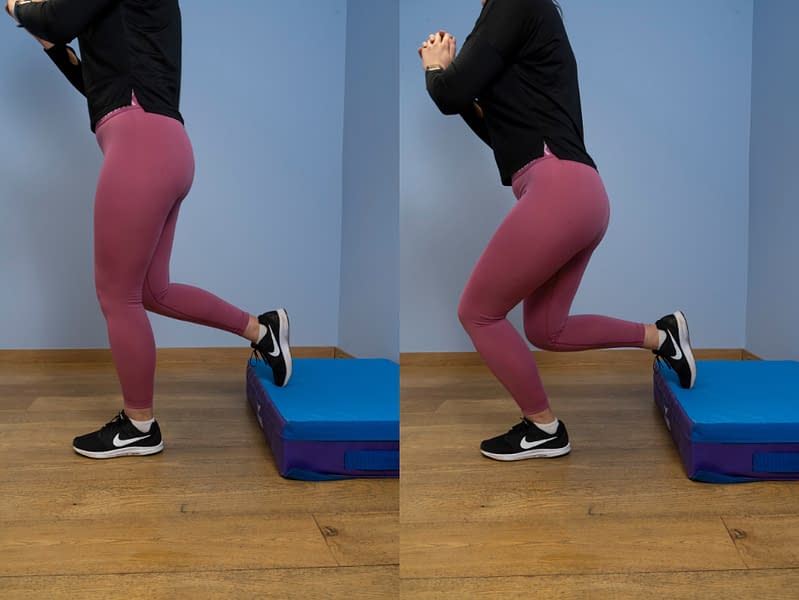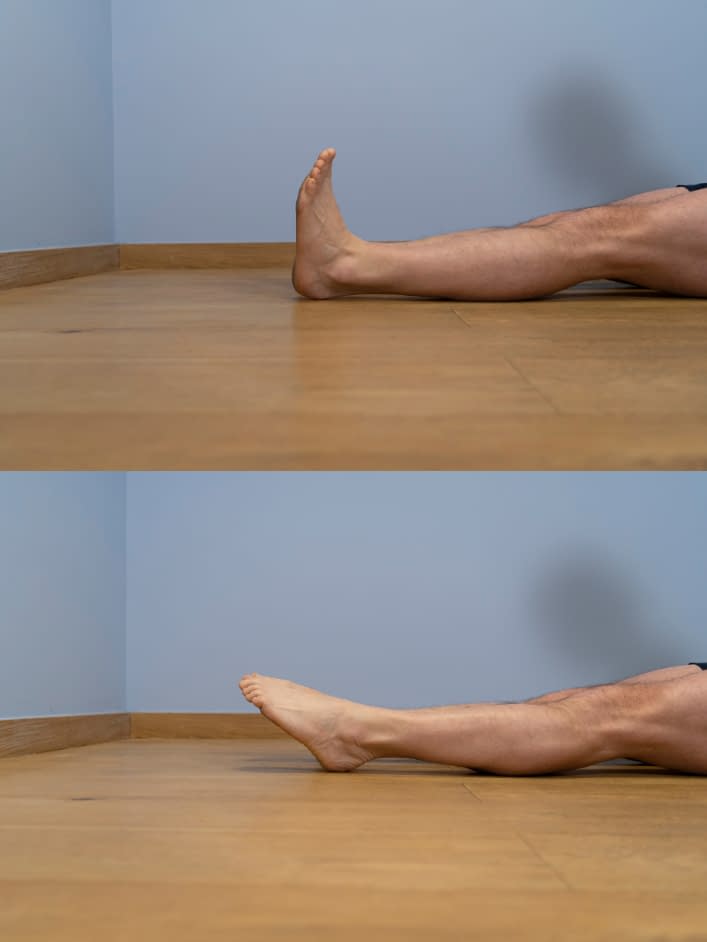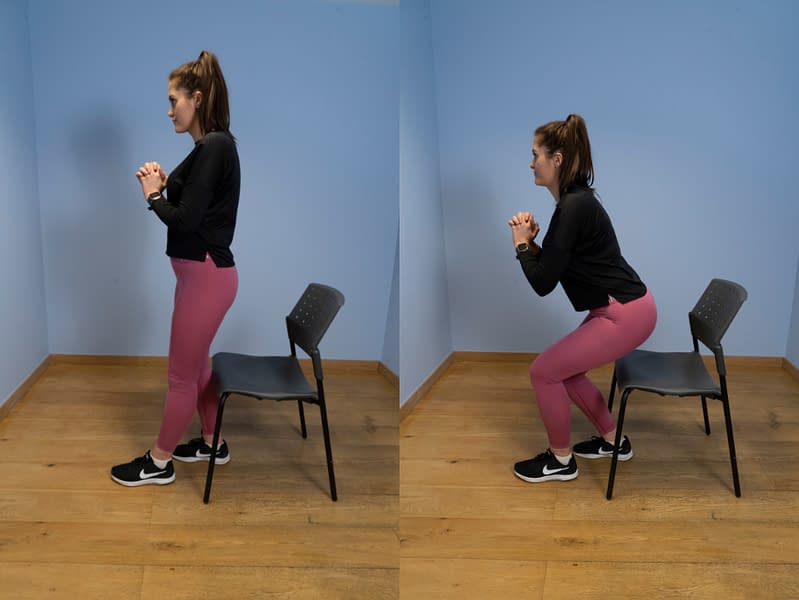Adolescent Shin Pain Intermediate Exercise Programme
Aim to perform this programme a minimum of once per day unless prescribed otherwise. As with any new exercise, start slowly (repetitions as able) and build up as you are able within the guidelines below.
Pain should not exceed 4/10 whilst completing this exercise programme.
1. Raised split squat
- For this exercise, you will need a secure raised surface behind you such as a small step.
- Stand upright in front of the surface facing away from it.
- Transfer your weight on to the target leg and place the foot of the trailing leg up on the small step.
- Bend the knee and hip of the standing leg so that your hips lower directly downwards to the point where the trailing knee is just off the floor.
- Hold for 3 seconds before squeezing the buttock and thigh muscles to straighten the standing leg – do not forcibly lock out the knee.
2. Isometric plantarflexion
- This exercise involves activating muscles around the ankle without moving the joint.
- Sit or lay with the legs out straight, feet off the floor and the ankles in neutral.
- As you look at your feet, place the non-affect foot behind the other so that the bottom of the affected foot is touching the top surface of the non-injured foot.
- Push away through the front part of the injured foot as if trying to point your ankle away from you.
- You should feel pressure through the top of the non-affected foot, resist against this to prevent the injured ankle from moving.
- Push with the injured foot at a pressure that you can comfortably hold.
3. Split stance sit to stand
- Stand in front of a normal height dining chair with one leg in front of the other, shoulder width apart.
- Transfer most of your weight to the leg closest the chair.
- Then slowly start to lower yourself back toward the chair, keeping as much of your weight as you can on the leg closest the chair.
- Once you touch the chair, quickly reverse the movement to stand back up.
We recommend consulting a musculoskeletal physiotherapist to ensure exercises are best suited to your recovery. If you are carrying out an exercise regime without consulting a healthcare professional, you do so at your own risk. If you have any concerns whilst completing these exercises, please contact a healthcare professional.
More Plans
This programme focuses on some early strengthening exercises that are safe to perform to ensure that deconditioning (decline in physical function) is limited. Pain should not exceed 4/10 on your perceived pain scale whilst completing this exercise programme.
- 0
- 1
- 2
- 3
- 4
- 5
- 6
- 7
- 8
- 910
At this stage we move towards more loaded and whole-body exercises to help ensure a return to normal movement and a safe and effective return to activity. Pain should not exceed 4/10 whilst completing this exercise programme.
- 0
- 1
- 2
- 3
- 4
- 5
- 6
- 7
- 8
- 910


